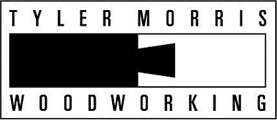You gotta give credit where credit is due.
So, about 10 years ago I started using a wood finishing spray booth on the weekends while Sheldon used it M-F. Going into this arrangement, I was well aware that he was an uptight perfectionist plus super territorial, and I had to comply with his rules.
Sheldon is in his mid-forties and is best described as a good ol' boy; which ain't a redneck, you know. Billy Carter once proudly described the difference between a good ol' boy and a redneck: the redneck throws his empty beer bottles out the window of his pickup truck but the good ol' boy tosses them in the back. But, perhaps this isn't the best analogy for Sheldon because he doesn't drink. Anyway, Sheldon deserves credit due to his methods of work. I recognize that these three methods I'm going to describe are specific to the woodworking industry and are extremely mundane, but bear with me.
The Stir Stick
"What a stupid thing to do." That's what I originally thought about Sheldon's precious stir stick that he's used forever. The stir stick gets used only when a new five gallon bucket of clear lacquer is opened, which occurs about every four days. I half-listened to him saying something about wiping off the stir stick with one paper towel (half-used preferably). He then pointed to a screw on the side of his workbench, "and always hang it back here." At first, I was like, whatever. I have been stirring buckets of lacquer for about 10 years prior, and the beautiful thing about working in a woodshop is- there are stir sticks wherever one looks. Just grab a piece of scrap, stir then throw it away.
The Staining Board
Then I was introduced to his staining board. It's just a 2 foot by 8 foot piece of ¼" thick, white melamine. He places the smooth, non-absorbent board atop his worktable and uses it whenever he stains cabinet doors. I was critical because I had always thought that staining should be done on scrap cardboard. The cardboard soaks up the excess stain and then you just throw it away after each job. On the contrary, Sheldon preaches that if you apply the proper amount of stain, you don't have to be concerned about the excess. At the end of the job, he cleans the board with about an ounce of lacquer thinner then he leans the board against the outside wall of the spray booth.
"Disposable" Rubber Gloves
It recently came to my attention that Sheldon hardly ever throws away his ten cent, blue nitrile rubber gloves. "Only after I wear one out and it develops a hole, do I throw it away," he told me. On the other hand, when I would do messy staining jobs, frequent interruptions would cause me to take my rubber gloves off often and I would throw the soiled pair in the garbage and get a new pair when I started back up.
Once again, I'm fully aware that these woodworking methods are hugely ho-hum; however, Sheldon's methods deserve credit or more accurately his habits deserve credit. When I asked him if he's an environmentalist he replied, "I don't know. But, I do know that I hate wasting stuff. I suppose I'm just a cheap bas%@#!"
Hey wait a minute, I deserve a little credit also. Allow me to toot my own horn briefly in order to make a point. But first, allow me to share a quote by Alvin Toffler, "The illiterate of the 21st century will not be those who cannot read and write, but those who cannot learn, unlearn, and relearn." Well, I had to learn how to use that stupid stir stick. I had to unlearn the thought that I had to stain on absorbent cardboard. And I had to relearn that I had to take an extra ten seconds to put on a used pair of "disposable" gloves. Thanks, Sheldon...
